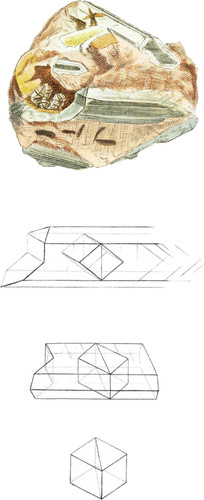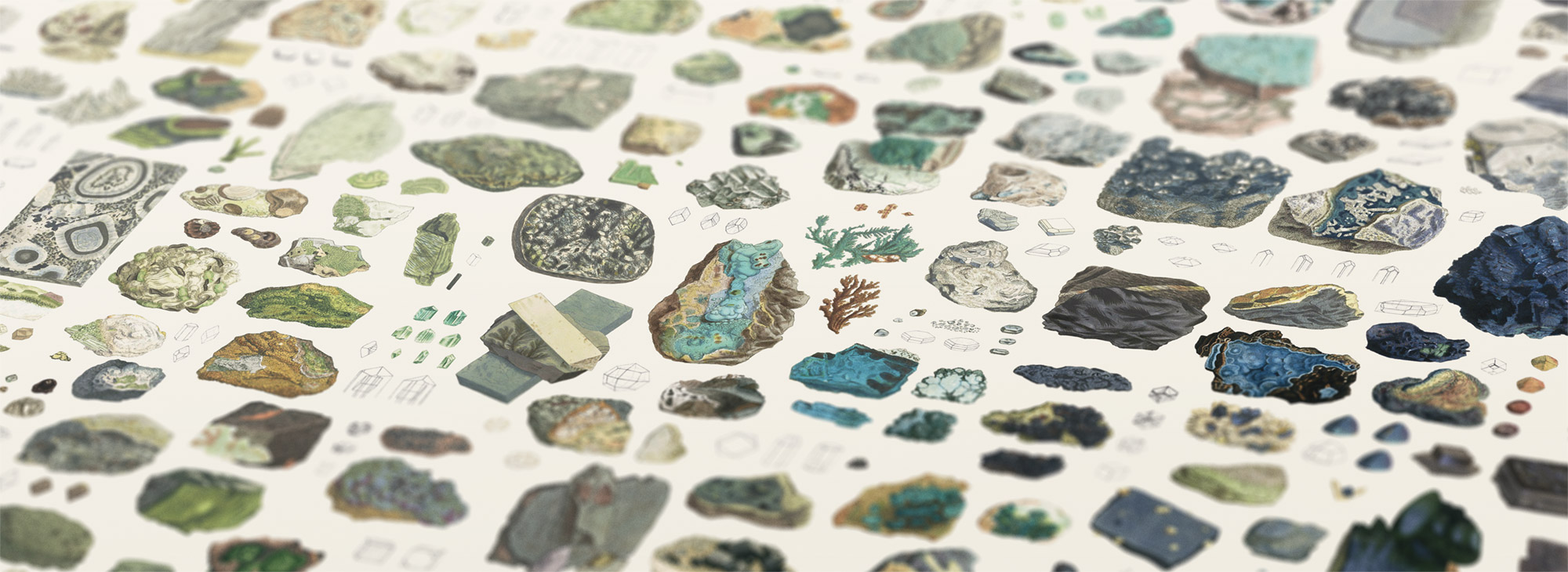 Enlarge
Enlarge
British Mineralogy
Sulphate of Barytes
- Class 2. Earths.
- Order 1. Homogeneous.
- Gen. 6. Barytes.
- Spec. 2. Sulphate.
- Div. Crystallized.
This curious specimen was sent me from Cumberland lead mine, at the head of the Nethan river, in Ayr-shire, by G. Laing, Esq. It is remarkable for the crystallized sulphate of barytes being immersed in amorphous sulphateof barytes. Not having before seen a fracture that indicates the integrant molecule, we are glad to make use of this specimen to show the form of one.
It is certainly very rarely to be fractured parallel to all its faces, some of which are not at all to be seen, and it should seem that Haüy had only observed them by the scintillations within the crystal. To explain the nature of the crystals formed in the upper figure, we have drawn a distinct outline in the middle one, including the nucleus, to show its situation. It will be easily seen that the perpendicular face at the left hand* end is parallel to the diagonal division of the nucleus, and the oblique fracture is parallel to one of the faces of the rhomboidal prism; the perpendicular lines indicate a continuance of the diagonal fracture, the others a continuation of the rhomboidal fracture. These are extended in the specimen more or less perceptibly until lost in small nuclei, at the right hand send of the crystallization.
The third figure may help to familiarise these things by its being placed in another position, and showing similar facts. The lower figure shows the geometrical divisions of the nucleus into two molecules, by means of this fracture parallel to the shortst diagonal of the rhomb.
Having seen this, we cannot doubt the opinion of Haüy, that there may be a fracture parallel to the longer diagonal, dividing the molecules above mentioned into two: thus for upright triangular prisms form the rhomboidal prism or nucleus, each being an integrant molecule.
- * The faces at this end are all fractured ones.

